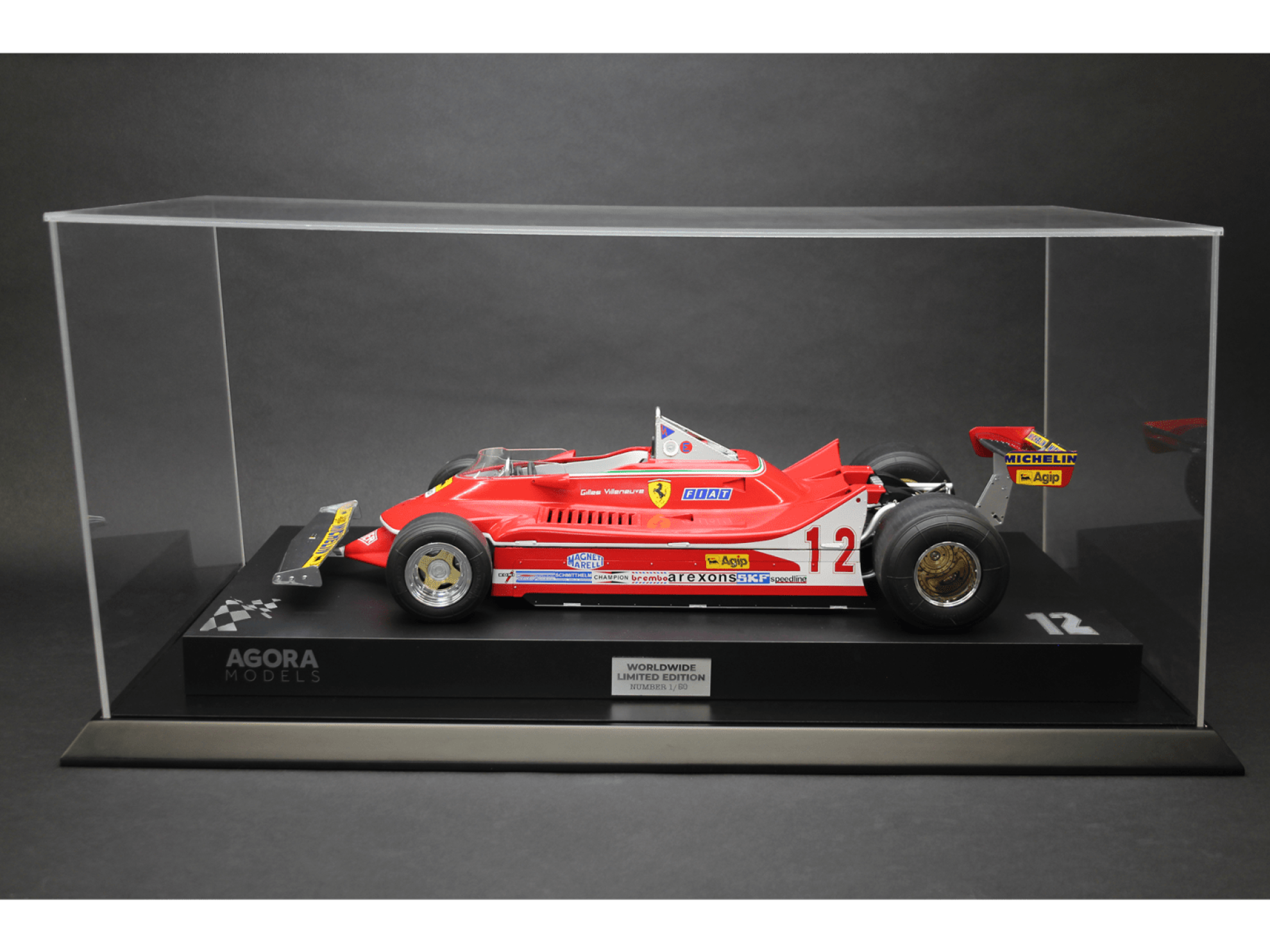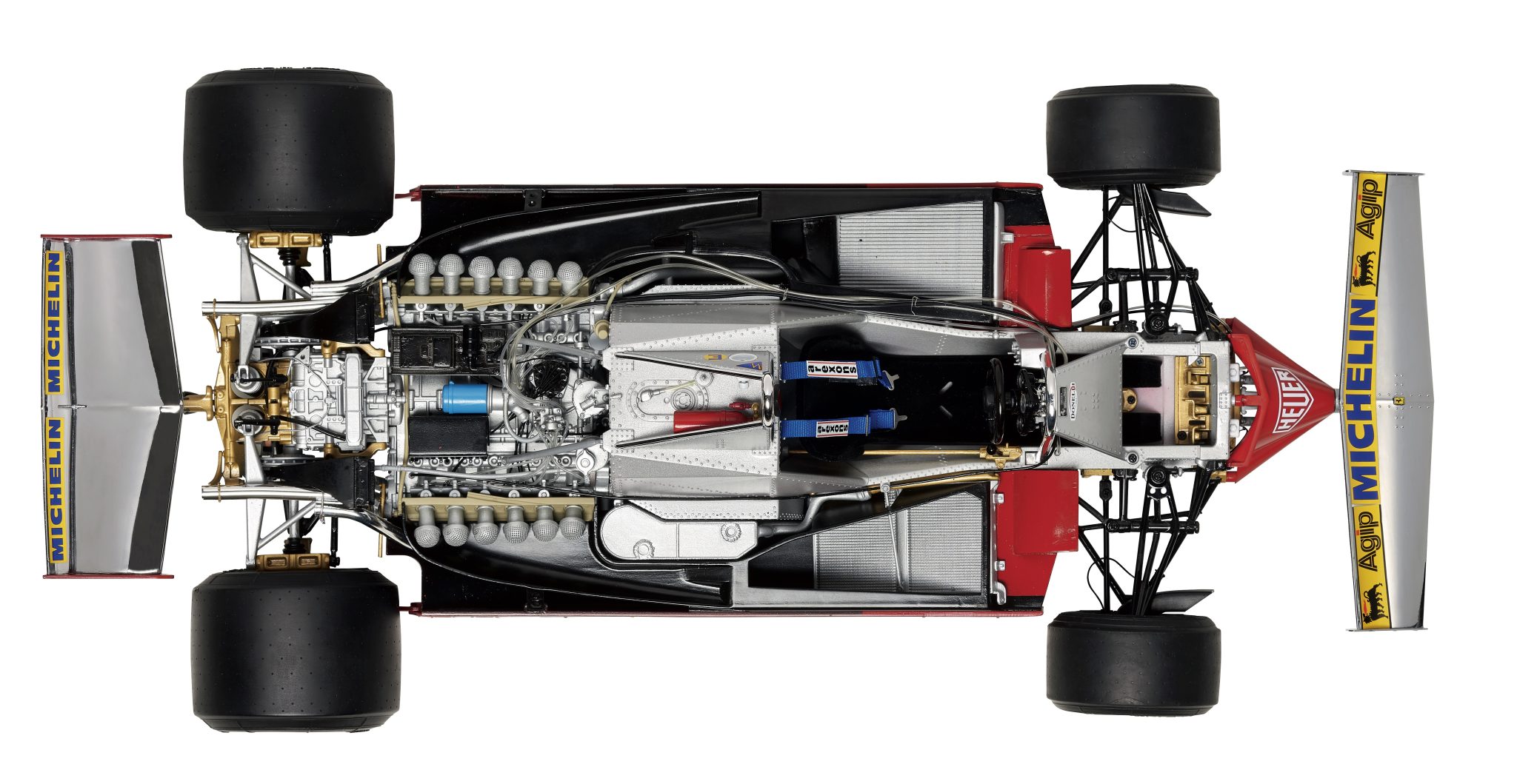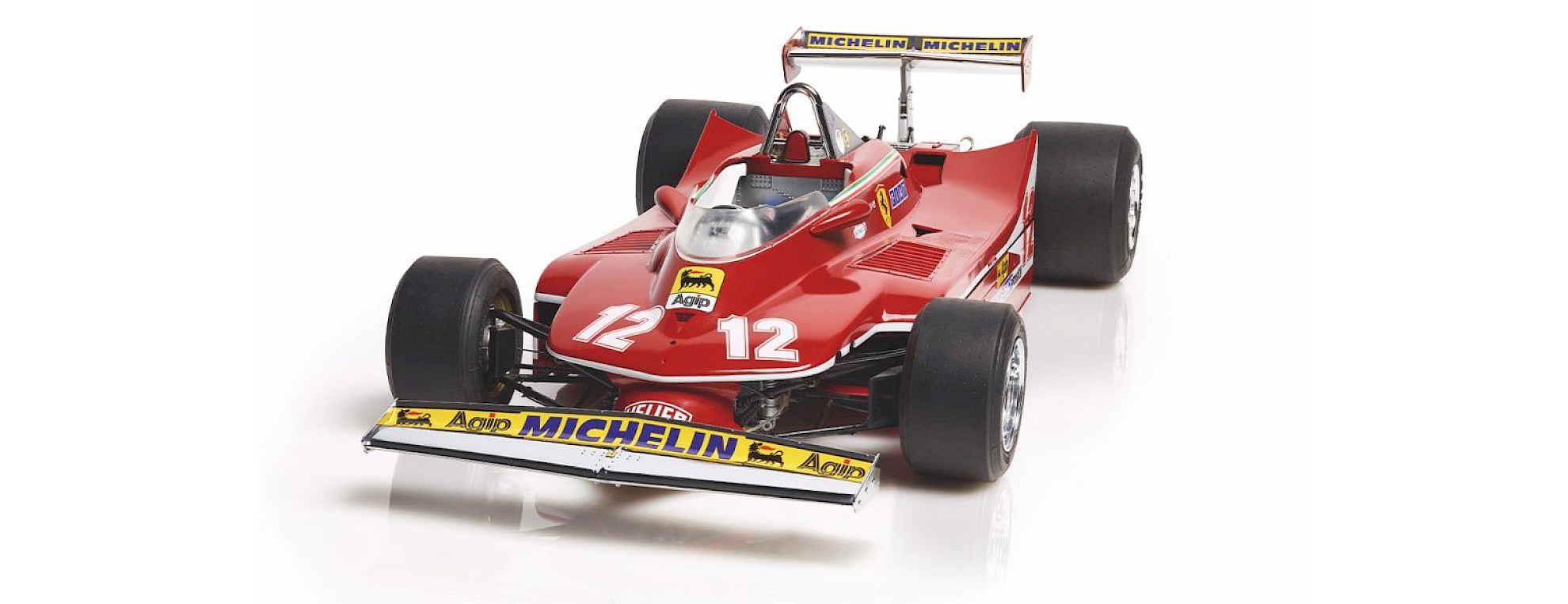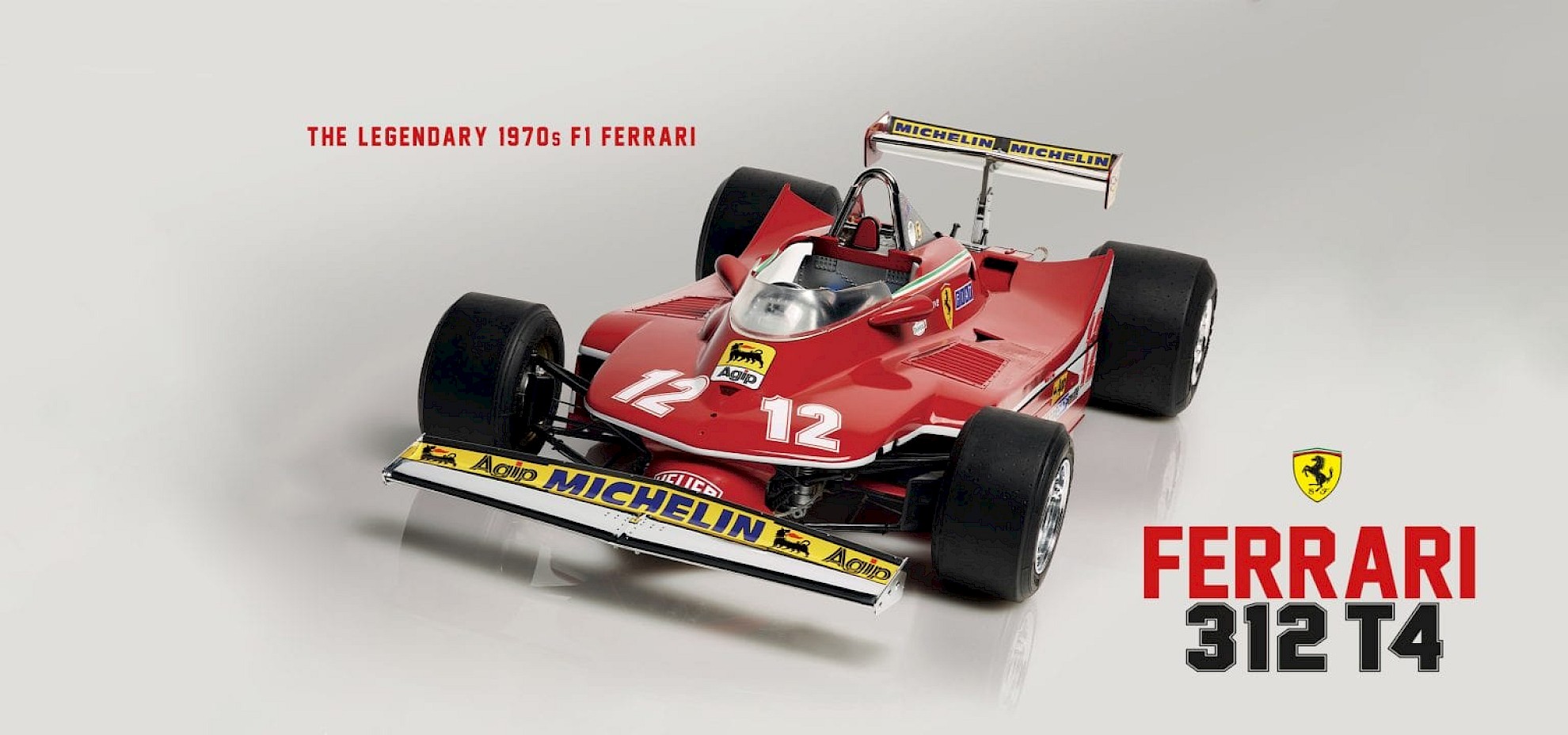
1979 Ferrari 312 T4
Special Limited Edition
Only 60 available worldwide
The car that dominated the 1979 Formula One Championship
As with all Ferrari F1 cars of the time, the 312T was designed by Mauro Forghieri. Built to replace its problematic predecessor, it featured a transverse-mounted gearbox (the T in the name standing for ‘Trasversale’) and a redesigned suspension system. The car was built to be easily upgraded and the fourth iteration — the 312 T4 — created a storm at its debut in 1979.
LIMITED EDITION
60 AVAILABLE WORLDWIDE
THIS MODEL IS ONLY AVAILABLE TO AGORA ADVANTAGE CLUB MEMBERS
This exceptional model is a Special Limited Edition of only 60 individually numbered sets. In addition to the model, you will also receive a display case plus a display plinth with an individually numbered name plate.
Your Limited Edition includes:
• Ferrari 312 T4 Die-cast model kit
• Individual numbered name plaque (1-60)
• Signed and numbered certificate (1-60)
• Limited Edition illuminated display plinth
• Acrylic display case with wooden base
Specifications & Features
Your intricately detailed 1979 Formula One Ferrari 312 T4
The 312 T4 proved to be an extremely reliable racer for Ferrari, winning its debut race and continuing to perform throughout the 1979 season. This led to a team-mate battle for the Driver’s title between Canadian Gilles Villeneuve and South African Jody Scheckter, who had won three races each.
Specification
- Scale: 1:8
- Weight: 2.65 kg
- Material: Body and chassis made from die-cast metal, with ABS plastic detailing.
- Length: 550 mm (21 5/8”)
- Width: 266 mm (10 1/2”)
- Height: 127 mm (5”)
- Number of parts: 450 approx.
Features
- Authentic Ferrari livery
- Detailed mechanical and aerodynamic components
- Fully functional suspension
- Metal-rimmed wheels
- Choice of slick and wet tyres
- Multiple nose decals for different races
- Standard and Monaco/Long Beach rear wing options
It's all in the detail
Outstanding detail at 1:8 scale
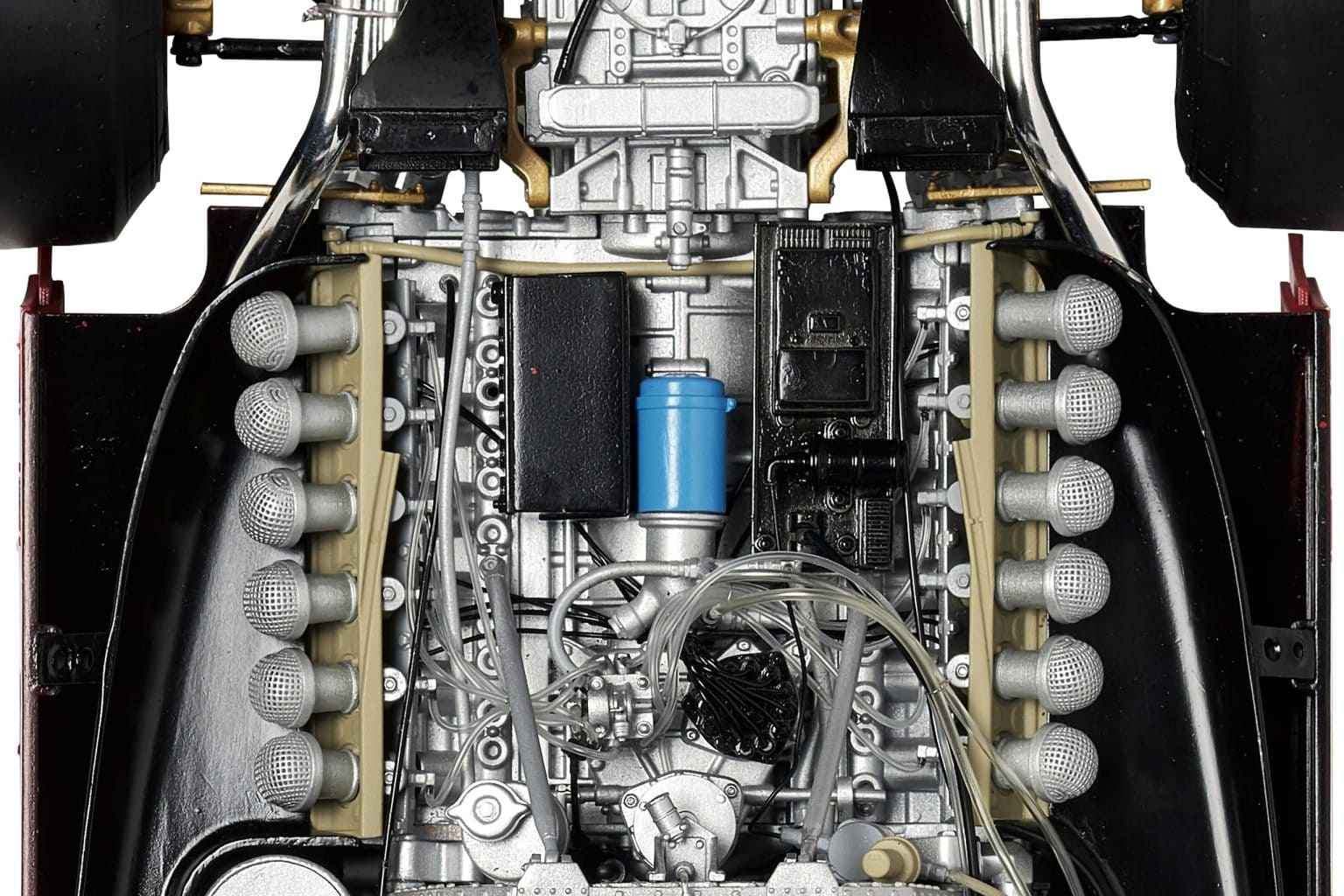
AUTHENTIC ENGINE
Featuring the legendary 12-cylinder 515 bhp Ferrari Type 015 engine
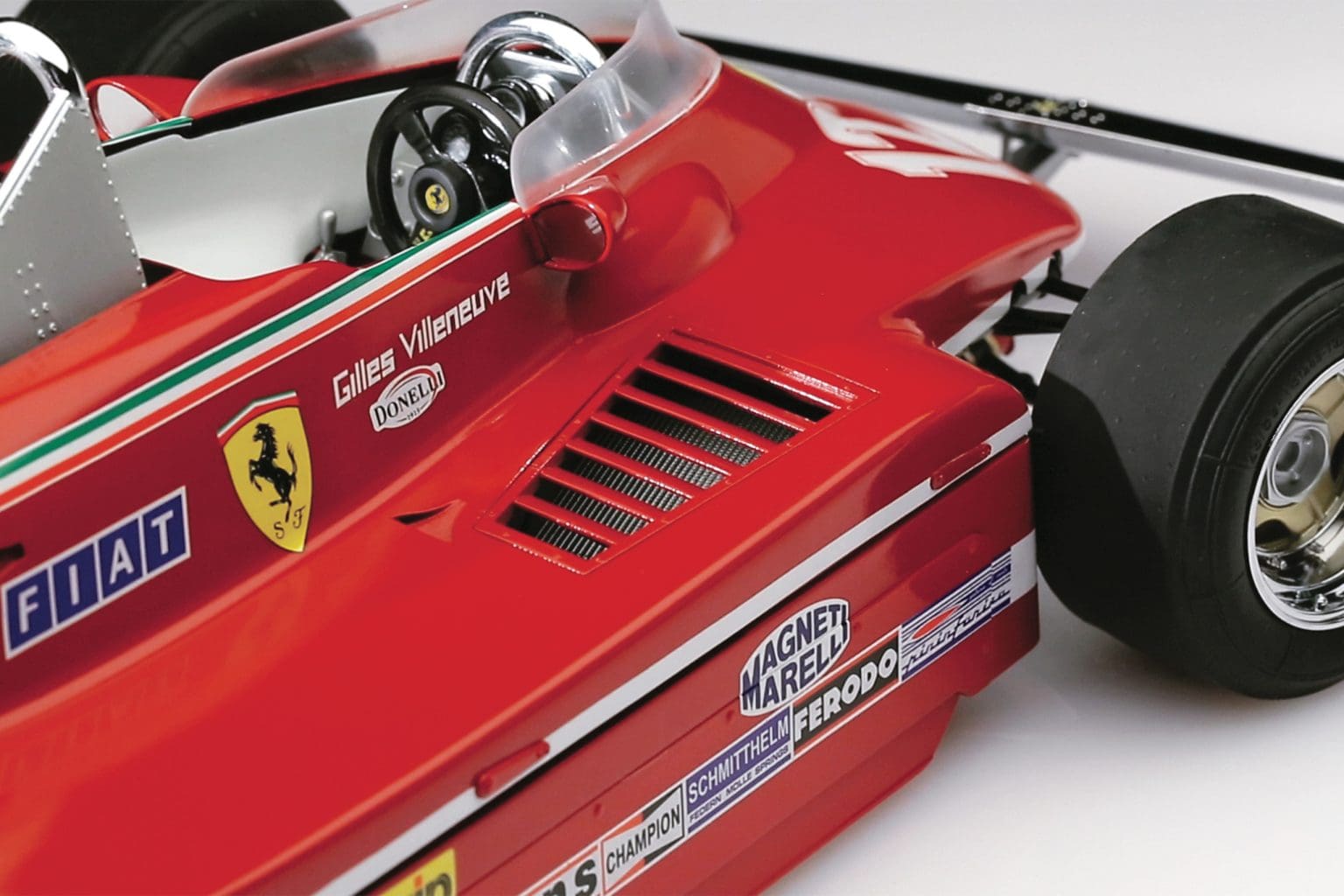
DIE-CAST METAL PARTS
Made from high-quality materials including die-cast metal, photo-etched and ABS parts
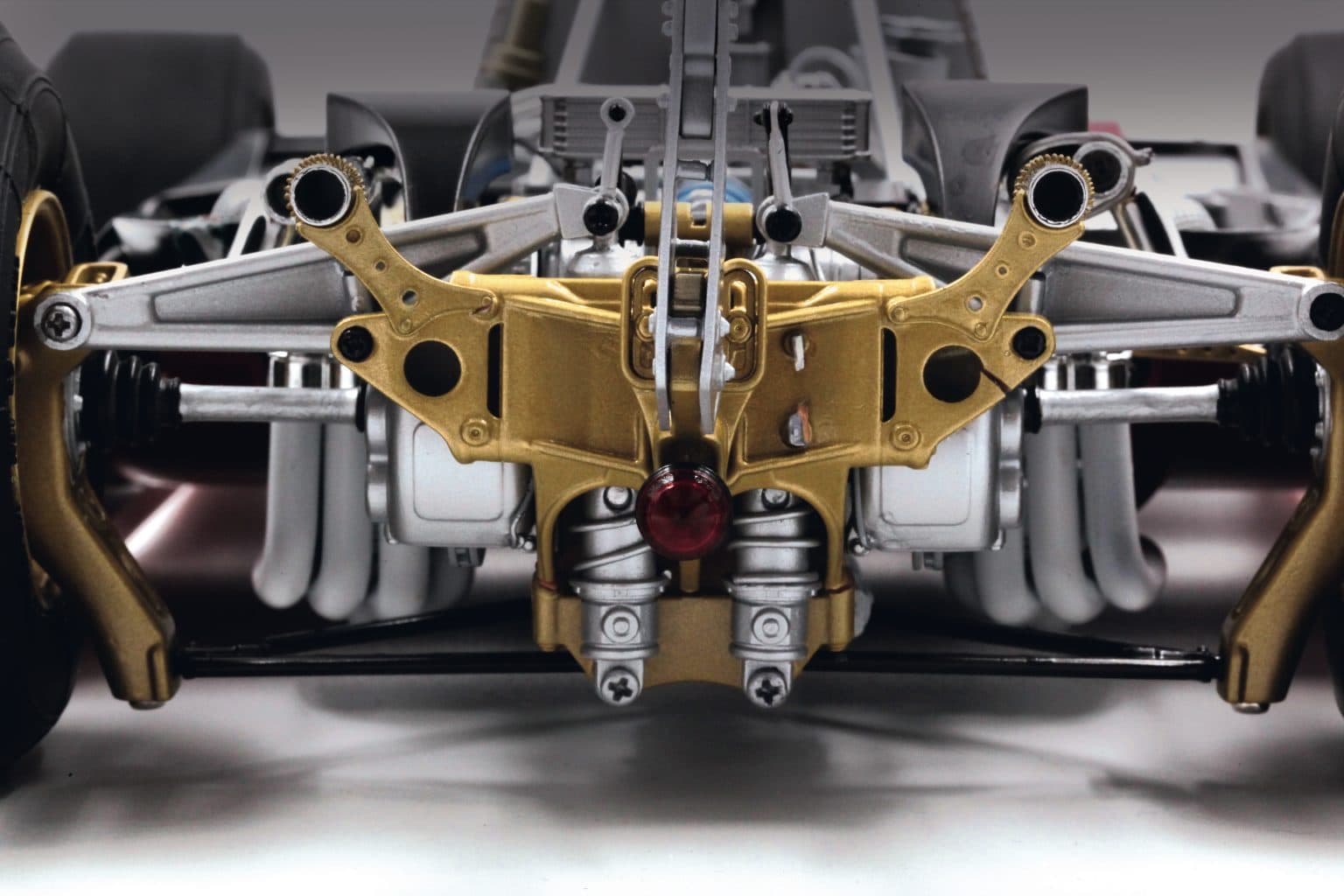
WORKING SUSPENSION
Fully functional, independent, transverse quadrilateral suspension system.
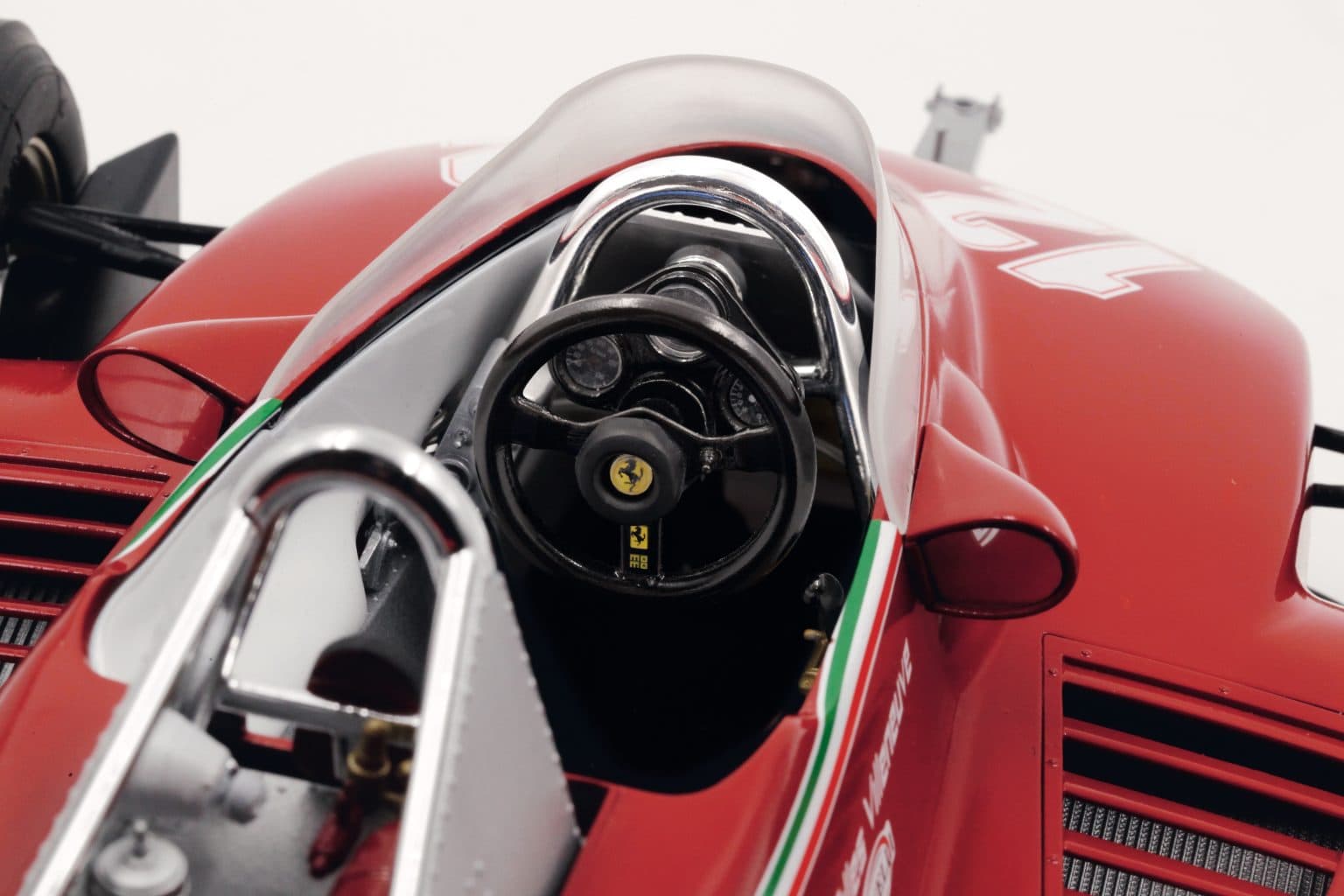
INTERIOR DETAIL
True to life dashboard and steering wheel, down to the smallest feature
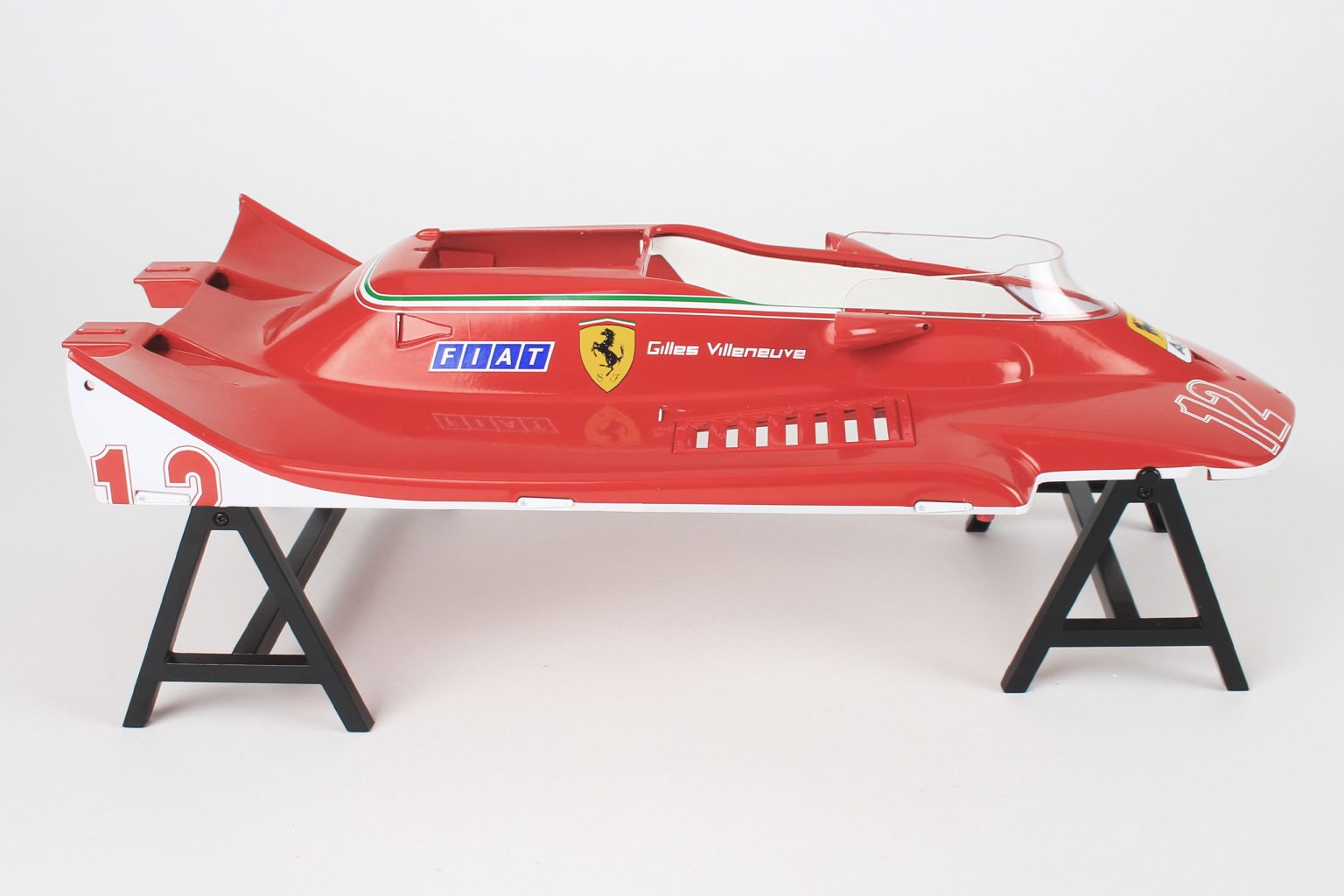
AERODYNAMIC BODY
Faithfully replicated bodywork can be removed for separate display
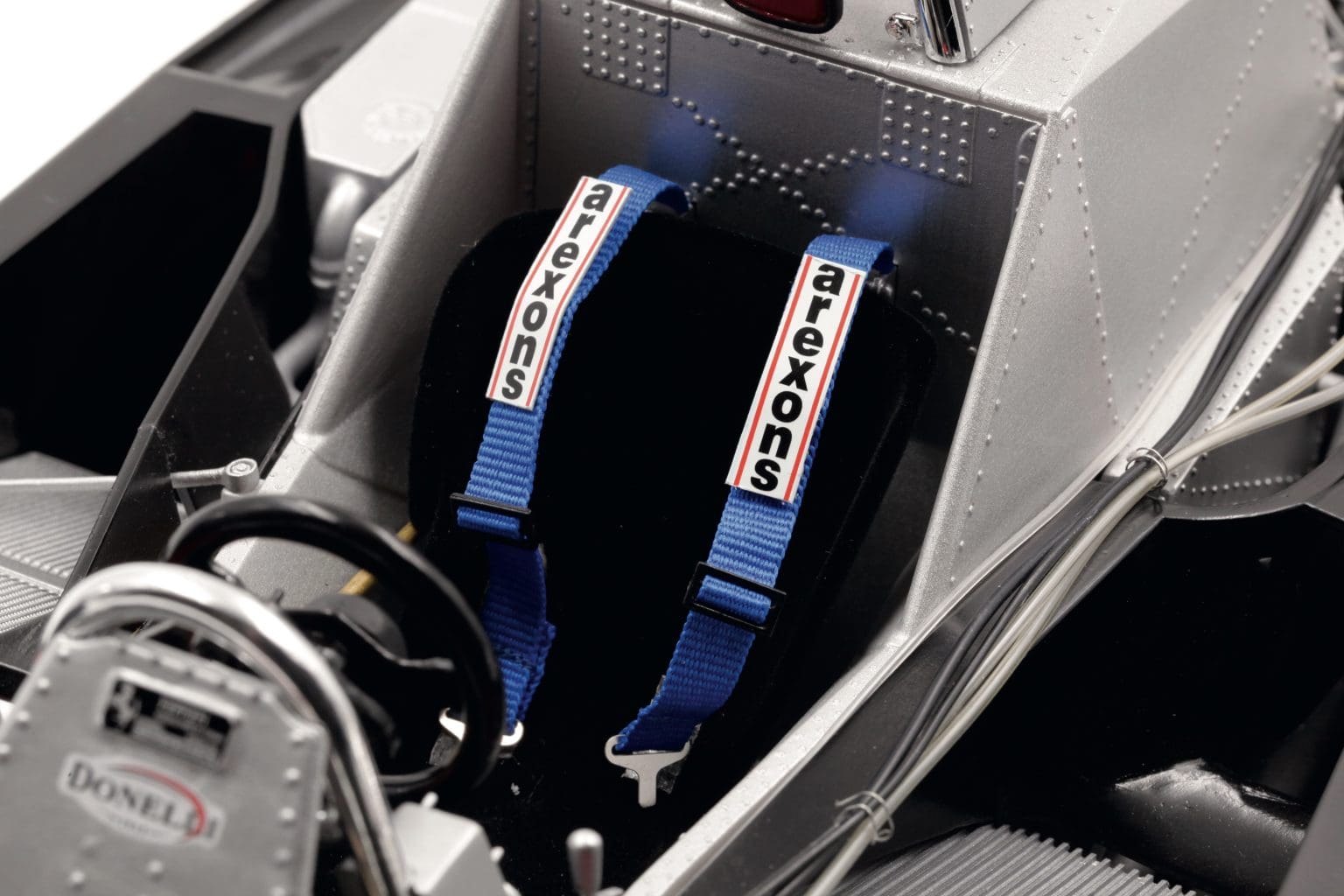
MONOCOQUE CHASSIS
Superbly detailed monocoque chassis with safety features
Configure your car
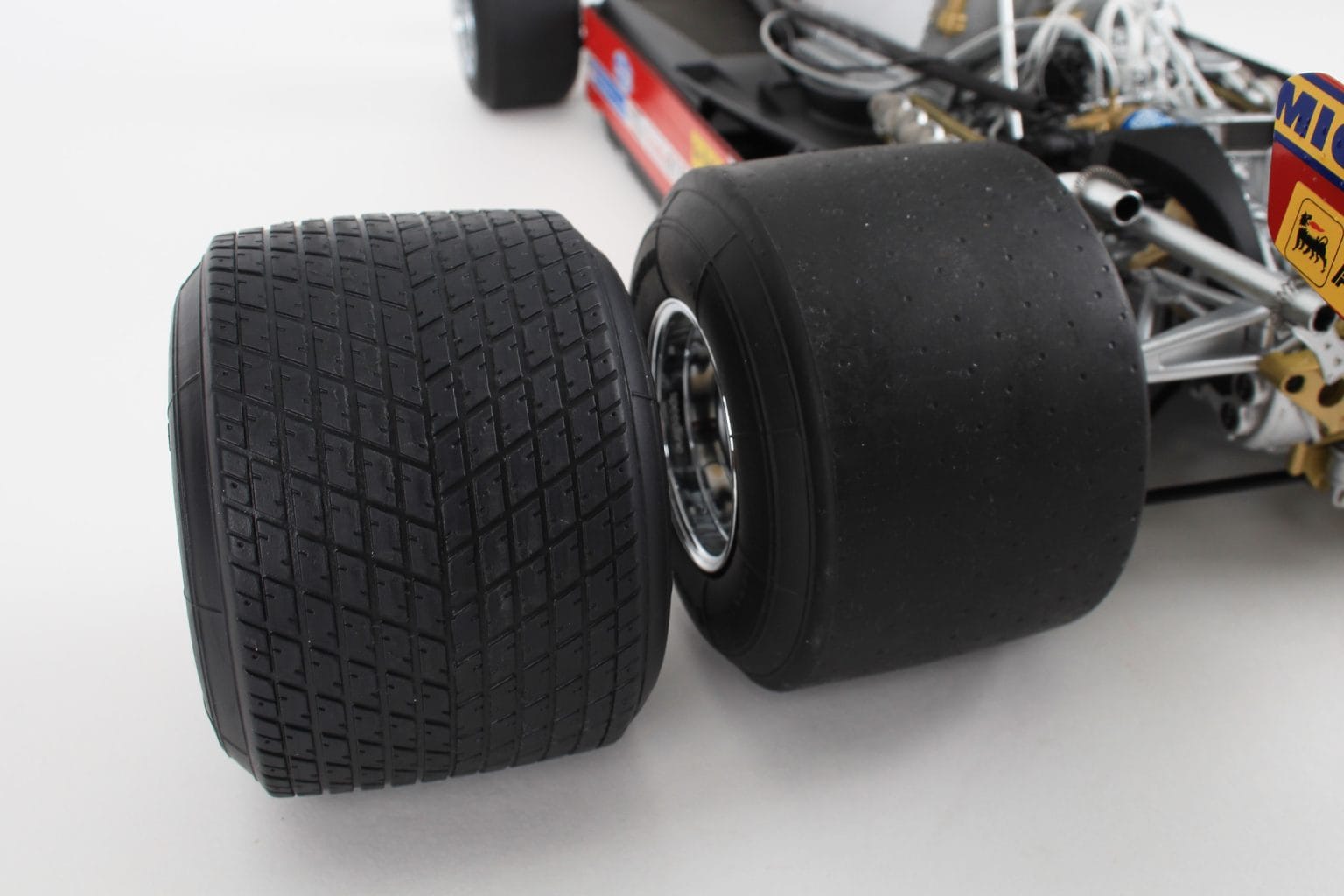
TWO SETS OF TYRES
Both slick and wet tyres are included
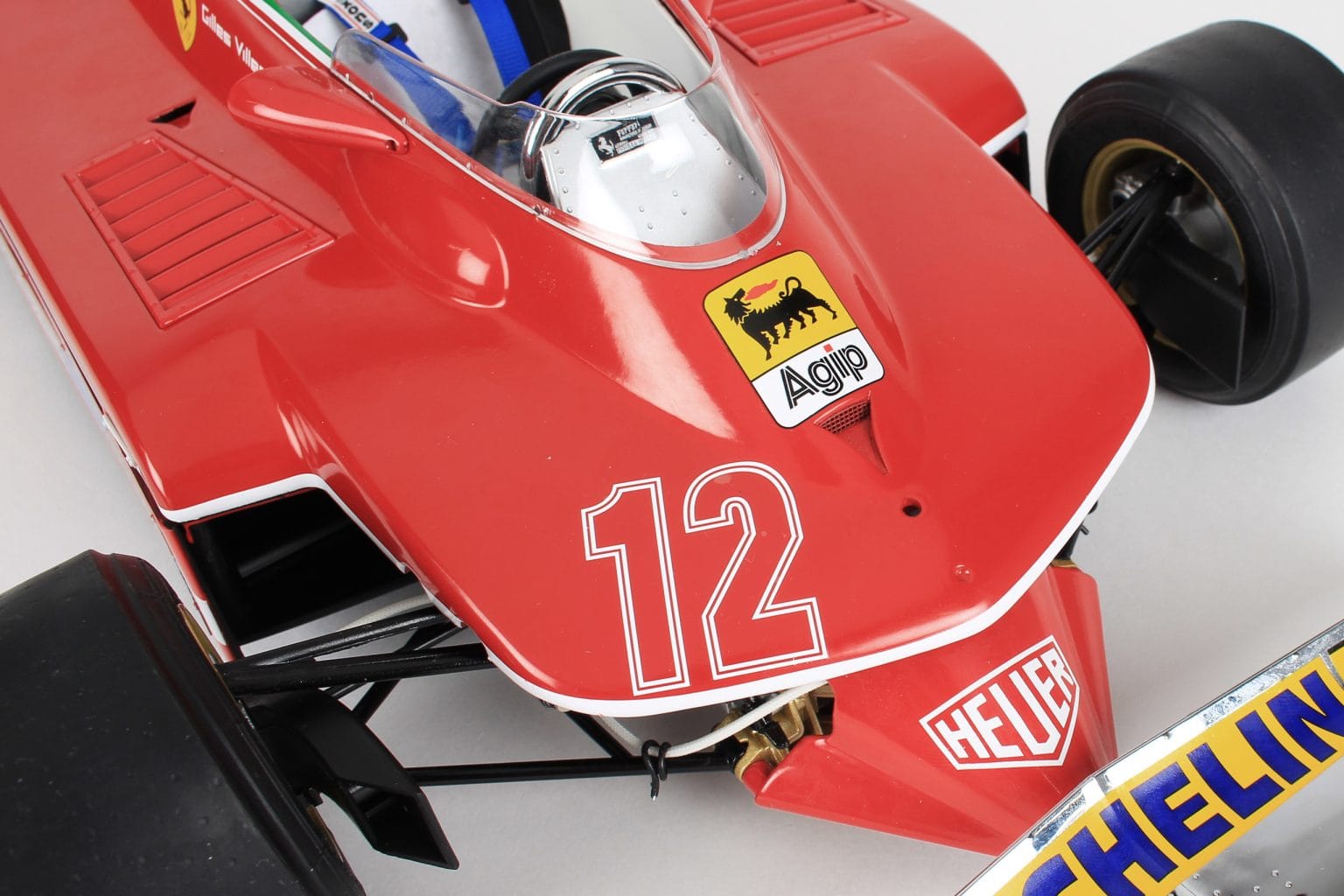
CHOICE OF DECALS
Style your model with different #12 nose decals
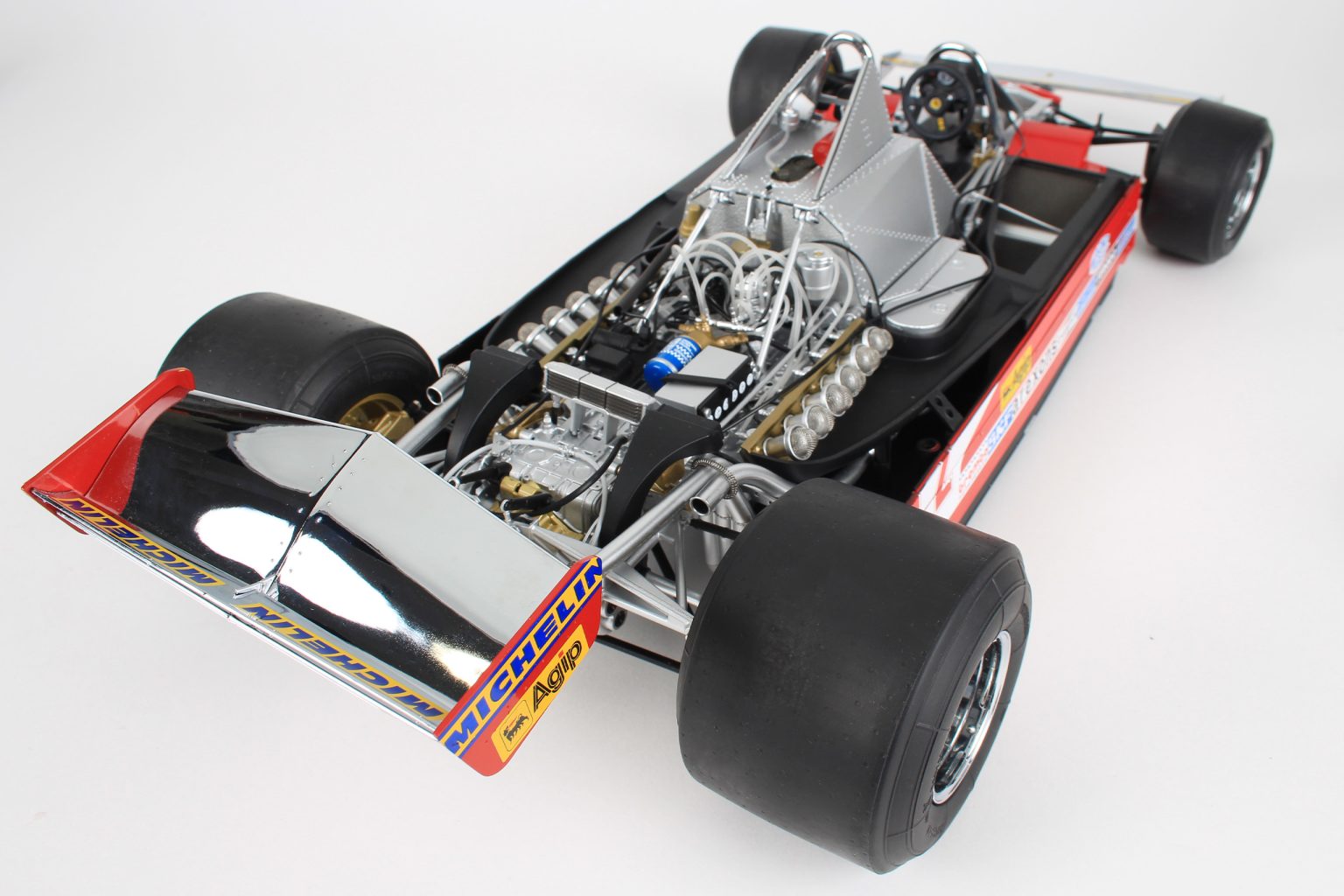
REAR WING
Two rear wings included to choose from
Gilles Villeneuve's 1979 Ferrari 312 T4
The Dawn of a New Era
Ferrari 312T, 1975 – 1980
Losing the constructors’ title and the drivers’ title during the 1974 Formula One season sparked changes at Ferrari. Luca di Montezemolo, who had joined as Enzo Ferrari’s assistant the previous year, was named as manager of Scuderia. Mauro Forghieri, the chief engineer, soon began work on a replacement for the 312B.
A complete overhaul was needed — despite its power, the 312B suffered from constant handling issues. The result was the completely new 312T, powered by the ultra-reliable flat-12 engine which produced around 510 bhp. As with most F1 cars of the time, the car used a monocoque aluminium chassis mounted on a tubular steel spaceframe. The “T” in the name referred to the transverse-mounted gearbox, which allowed for better weight distribution as the five-speed manual gearbox could be positioned ahead of the rear axle. The suspension system was also redesigned, with the engineers making the car more aerodynamically efficient by narrowing the front of the chassis.
The first victory in the 312T came at the fifth race of the 1974 season in Moracco, when Niki Lauda beat the Brazilians Fittipaldi and Pace. The new Ferrari would go on to win five out of the remaining nine races, proving its superiority over the competition and taking back the constructors’ and drivers’ championships under Lauda’s handling.
The team behind the 312T had designed their F1 car to be easily upgraded to account for the changing regulations of the sport. The 312T saw five versions throughout its racing life until it was replaced for the 1981 racing season. It was one of the most successful car designs in Formula One history, winning a total of 27 races, four Constructors’ and three Drivers’ Championships.
The Golden Age of Formula One
The 1979 Ferrari 312 T4 dominated the races.
Formula One in the 1970’s has been referred to as the Golden Age of F1. The 1979 British Grand Prix saw eighteen teams with thirty-nine drivers competing in cars that were innovated for each race to try and gain an upper hand.
At the start of the 1979 Grand Prix season, the Lotus 79 was the car to beat. As the first car to take full advantage of ground effects aerodynamics, used to create downforce and provide greater grip when cornering, the Lotus had led to other teams building new designs for the new season.
Ferrari’s 312T series was powered by the impressive and ultra-reliable flat-12 engine that had been in use since 1970, but the car had not been designed with downforce in mind. As a result, the monocoque of the 312 T4 was limited by the width of its engine but designed to be as narrow as possible. The Ferrari technicians broadened the flanks to house the air intakes, while the suspension was redesigned to minimise drag, and the rear brakes were inboard to reduce the unsprung mass, improving grip and traction control.
The results of Ferrari’s modifications were immediate. The 312 T4 dominated the season, with Gilles Villeneuve claiming victory in the South African Grand Prix and a Grand Chelem at Long Beach. In rounds 6 and 7, Jody Scheckter secured two more wins at the Belgian and Monaco Grands Prix.
The second half of the season saw both Villeneuve and Scheckter continue to score consistently, until Scheckter secured the Champion title at the Italian Grand Prix with Villeneuve just four points behind him.
Unsurpassed talent, personality and courage
“I liked everything about him. He was the craziest devil I ever came across in Formula One.”
– Niki Lauda.
Joseph Gilles Henri Villeneuve was born on the 18th of January 1950 in Saint-Jean-sur-Richelieu, Montérégie, Quebec, Canada. He began racing snowmobiles before moving into single seaters, winning the Formula Atlantic Championship in 1976.
McLaren offered him a spot on their Formula One team for the 1977 British Grand Prix, where he drove for a single race with before moving to Ferrari for the last two races of 1977. He was quoted as saying that “if someone said to me that you can have three wishes, my first would have been to get into racing, my second to be in Formula One, my third to drive for Ferrari…”
After a difficult season in 1978, Villeneuve won consecutive races for the 1979 season in Kyalami and Long Beach in his newly debuted Ferrari 312 T4. Alongside his teammate Jody Scheckter, he went on to win 3 races throughout the season, leading to a memorable battle between the two drivers. In the end, the pair made a 1-2 win for Ferrari, with Jody Scheckter taking the title. At the same time, they proved the reliability of the new T312 T4, giving it a 100% record – a significant achievement for cars of 1979.
Villeneuve continued racing for Ferrari, impressing many with his driving. British engineer and Technical Director Harvey Postlethwaite commented that “in terms of sheer ability, I think Gilles was on a different plane to the other drivers.”
Tragically, on May 8th, 1982, during the final qualifying session for the Belgian Grand Prix, Gilles Villeneuve was killed when he collided with Jochen Mass. At his funeral, Jody Scheckter delivered the eulogy: “I will miss Gilles for two reasons. First, he was the most genuine man I have ever known. Second, he was the fastest driver in the history of motor racing. But he has not gone. The memory of what he has done, what he achieved, will always be there.”
Technical Specification
Car type: single-seater F1 car
Kerb weight: 590 kg (1300 lbs)
Dimensions: 4.46 m (175 9/16 in) long, 2.12 m (83 7/16 in) wide, 1.01 m (39 3/4 in) high
Wheelbase: 2.7 m (106 5/16 in)
Power: 379 kW (515 hp) at 12,300 rpm
Torque: 331 Nm
Engine type: Ferrari Type 015 180º V12
Fuel Tank: capacity 190 litres
Displacement: 2,991.8 cc (182.6 cu in)
Transmission: Ferrari Type 022 5 speed Manual
Layout: mid, longitudinally mounted engine, rear wheel drive

